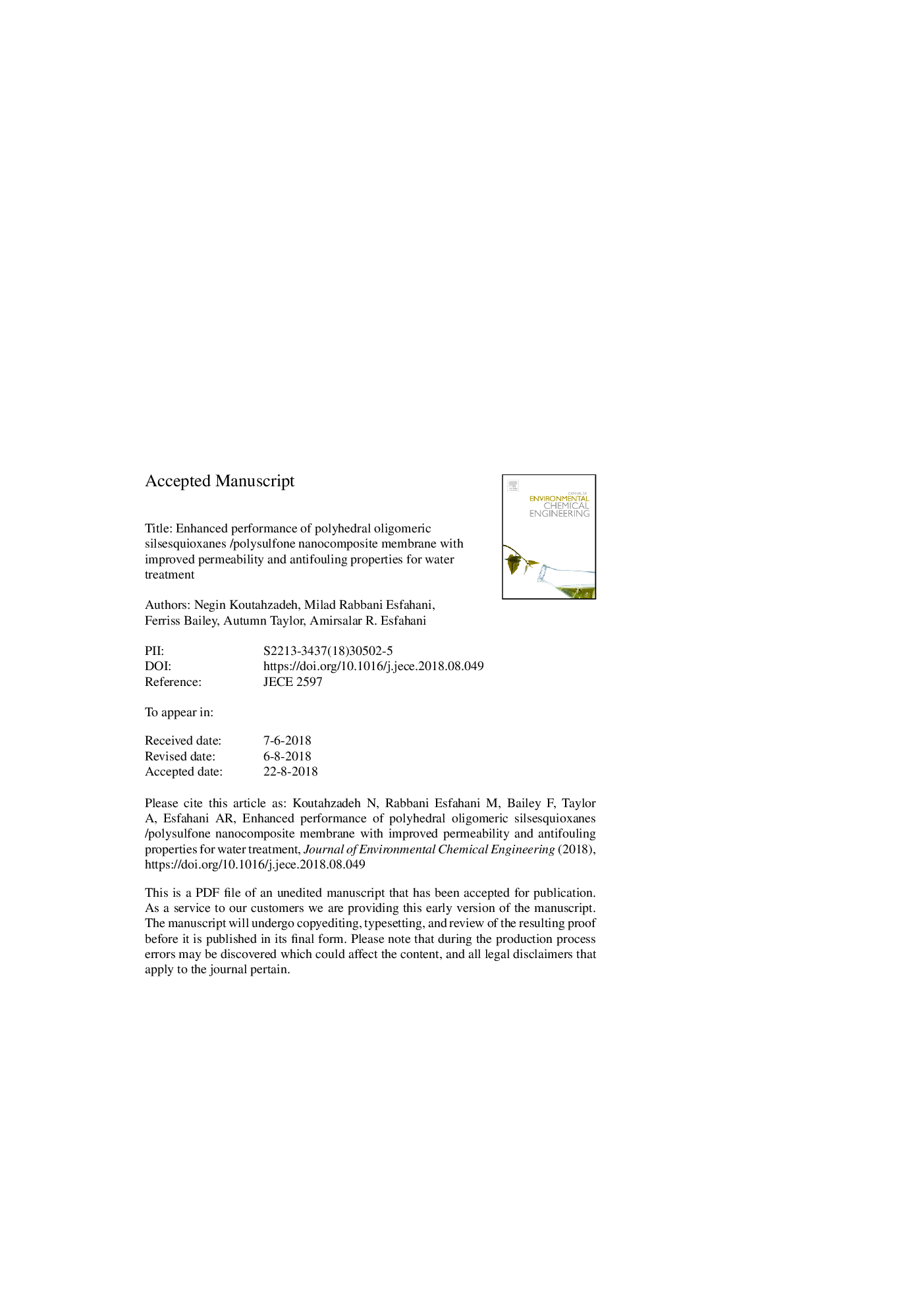| Article ID | Journal | Published Year | Pages | File Type |
|---|---|---|---|---|
| 8965099 | Journal of Environmental Chemical Engineering | 2018 | 39 Pages |
Abstract
Modification of polymeric membranes for generating membranes with enhanced permeability, rejection, and self-cleaning capability in water treatment has been the major goal of researchers in academia and industry recently. We report here a new polysulfone (PSF)/ polyhedral oligomeric silsesquioxanes (POSS) nanocomposite ultrafiltration membrane with enhanced permeability, rejection, and antifouling capability for treatment of feed water containing humic acid (HA) as a model foulant. The effects of incorporation of POSS nano-fillers on intrinsic properties of PSF membranes such as membrane surface charge, surface roughness, pore morphology, tortuosity, porosity, and consequently on membrane performance were evaluated. In general, the main effects of POSS nanoparticles at concentrations of less than 2% (wt.%) can be summarized as (1) increased hydrophilicity and negative electrical surface charge of the membranes which resulted in the enhanced self-cleaning and rejection properties and (2) a change in the membranes pores morphology towards formation of more pores on the top surface and interconnected long finger like pores in the membrane matrix which resulted in higher flux. The addition of 2% POSS into PSF membranes resulted in significantly enhanced membrane permeability, however reduced the rejection ability of the membranes. The concentration of 0.5% POSS was found to be the optimal concentration that increased the permeability as well as the antifouling capability of the membranes while the rejection capability of nanocomposite membranes for HA increased slightly as compared to pure PSF membranes.
Keywords
Related Topics
Physical Sciences and Engineering
Chemical Engineering
Chemical Engineering (General)
Authors
Negin Koutahzadeh, Milad Rabbani Esfahani, Ferriss Bailey, Autumn Taylor, Amirsalar R. Esfahani,
